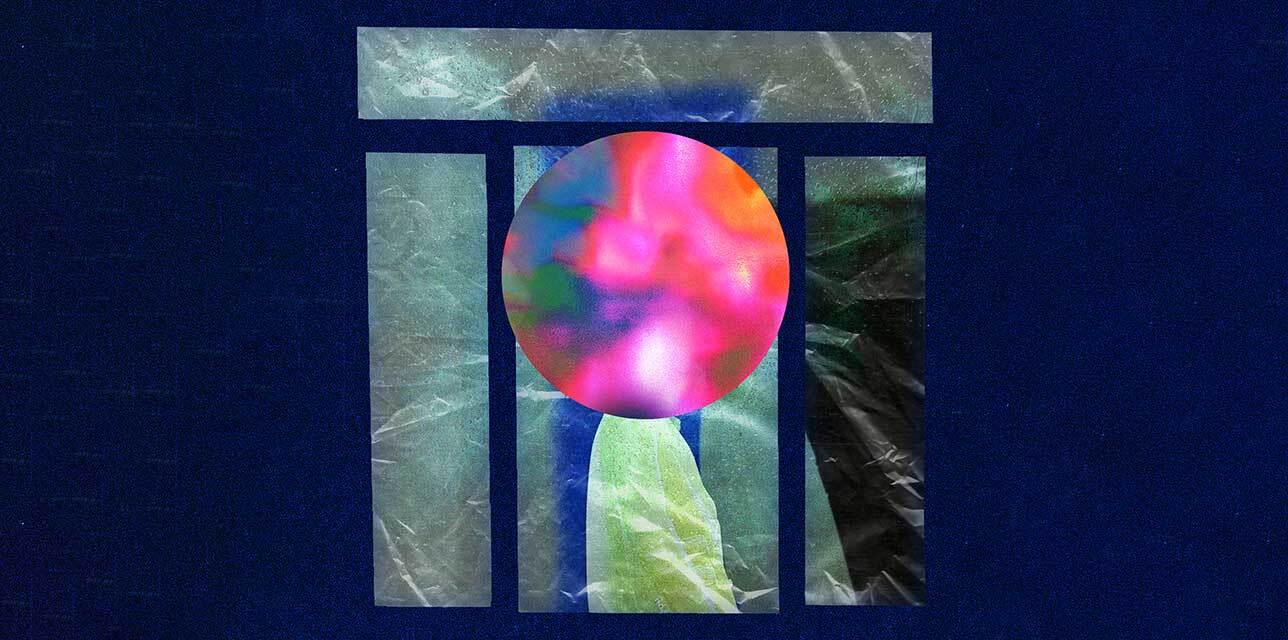On a brisk October night, audience members were invited to gather on a busy Temple Bar street for Dublin Theatre Festival’s first showing of Window A World. Part film, part installation and part live theatre, Window A World was conceptualised, directed and designed by Hong Kong-Irish theatre maker Choy-Ping Clarke-Ng 吳彩萍. A thoroughly modern affair, attendees were advised to come equipped with a smartphone and headphones, allowing them to connect to an online audio stream.
Soft orchestral music formed a confluence with the real-life noises of the city, and a blue-green Earth was projected onto the large square window of a white brick building. A feminine figure replaced the Earth, and a Cantonese monologue began. The figure in the window slowly undressed, shedding a gothic dress and gloves to reveal a masculine frame underneath. A pop-art style close-up intimately introduced the audience to Knife, the show’s lead.
The cool tones gave way to oranges as Knife, revealed to be in Belgium, began a phone call to a friend in California. The pair exchanged sensually charged pleasantries and memories, and it transpired that they had not spoken in months. Knife, a struggling creative, was “travelling wherever the money is”, and they wondered aloud when a person could be sure of themselves and their career. Is it when they know what they’re doing? Is it when other people approve of what they’re doing? Is it when they’re making good money? Is it when they’re proud of themselves?
Next, Knife expressed a longing to “slow down and find [their] own home somewhere safe”. They declared the existence of a “Dublin to Glasgow migration wave”, and, as the orange light split into fragments of yellow and pink, they admit to their loneliness – “never entirely in the right place”. Modern Hong Kong is a vague imitation of the place they left as a child, and Ireland is unrecognisable with its familiar faces gone.
This erosion of cultural identity was expanded upon in the next scene, when Knife visited a restaurant and the waitress introduced herself in Cantonese. Knife’s attempt to explain that they don’t speak it trailed off, and they complimented her, in English, on her music taste as the Cocteau Twins hummed softly in the background. In stilted, rehearsed speech, they attempted to introduce themselves in Cantonese. Their inner monologue seamlessly and subtly connects the major themes of the show: “I can remember how to say theatre designer, but I’ve forgotten the word for artist.” The universality of the script is perhaps most evident here, as even audience members that can’t relate to Knife’s struggle to recover their native tongue will connect with the experience of a career eclipsing one’s passion.
As Knife descended into panic, the colour of the projection, now pink, bled beyond the confines of the window and stained the white brick wall. They looked at the waitress, also multiracial, and wondered about her life, her pain, her family and her friends. They prayed that she would have an easy time “navigating the inbetweenness”. Whether they were referring to the precarity of being young and establishing a career, or the struggle of being multiracial and shaping an identity, remained pointedly unclear.
The show’s opening monologue, initially indecipherable, was now elucidated by subtitles. The projection was replaced by a vignette of a Hong Kong streetscape, the brightness of the day an inverse mirror image of the real-life Dublin darkness. The aunt appeared in her window, advising Knife on many of the themes they expressed fear over, such as land and water and changing cultural ties. This maternal reassurance was no doubt of value to the audience, whose anxieties surely mirrored Knife’s own.
At this point, the audience was instructed to turn around and look up. On the balcony of the Project Arts Centre stood a woman, dressed as an angel, singing something between a lament and a lullaby. The crowd expanded beyond the original audience, as passersby stopped to watch the ethereal figure. Her wings, initially a luminescent blue, faded to pink before emerging a bright and fiery red. Her song merged with the excited chatter of people on the street as the performance drew to a close.
Window A World, through its interactive and immersive set-up, blurred the lines between real life and performance, intensifying its impact and amplifying its themes. Audiences will resonate with the show’s exploration of identity and uncertainty, but they can rest assured that despite the mass migration that has come to characterise the Irish experience, Dublin’s creative community remains as busy and brilliant as ever.
Window A World will run at the Dublin Theatre Festival box office until October 16th. Tickets start at €5.







